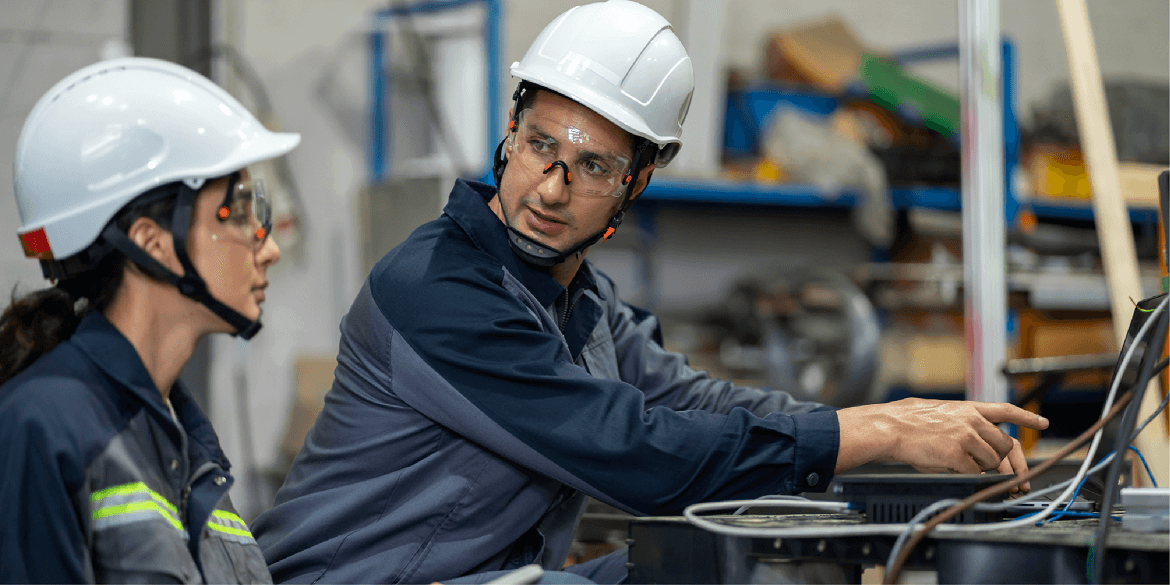How A&D is losing its skilled maintainers

What is juniority?
How did we get here?
The stark reality is that the pool of aviation mechanics is aging fast. In the US, 40% are already over the age of 60, and the average FAA mechanic is 54. Over the next decade, one in three certified mechanics will step out of the hangar for good. So how did we get to this point?
Reactive succession planning
The shrinking supply of technicians can be at least partly traced to historical approaches to succession planning. Instead of proactively identifying future skill gaps and readying junior staff to step into critical roles, many organizations wait until a senior technician retires or resigns. They then find themselves scrambling to fill the void, with little time for structured handovers, mentorship or knowledge capture. To make matters worse, many newly hired technicians leave the industry within the first two years – barely enough time to properly train them.
Rapid progress – but slow training
Even as hiring has become sluggish, the pace of innovation in aerospace and defense has been relentless, from predictive maintenance powered by artificial intelligence to digital twins and augmented reality-assisted repairs. But training hasn’t evolved nearly as quickly. Junior technicians are getting left behind, and the people with the deepest knowledge are retiring faster than they can pass it on.
The STEM educational pipeline
Things are turning around – there’s been a big push to get more students into science, technology, engineering and mathematics (STEM), and it’s working. But while this influx of graduates brings new blood into the industry, it also tips the balance of the workforce further towards junior maintainers.
Why is juniority a problem?
In many ways, a young, vibrant workforce with years of potential service ahead of them is a good thing. But when the scales tilt too far towards juniority, several challenges arise.
Lack of knowledge transfer
Anyone who’s been in a profession long enough will be familiar with the kind of insight that comes from years of trial, error and intuition. But when experienced professionals retire without structured mentorship or training programs in place, that knowledge walks out the door with them. The institutional memory that keeps maintenance operations running smoothly starts to fade – one retirement at a time.
Difficulties with risk management
These skill gaps create real risks. New graduates are entering highly complex, safety-critical environments with limited hands-on experience. And without enough senior mentors to guide them, the learning curve is both steep and risky. They may miss subtle warning signs, underestimate the impact of a small oversight, or struggle to make confident decisions under pressure.
Slower maintenance cycles
When teams are less experienced, everything takes longer. Junior technicians may need more time to interpret manuals, double-check procedures, or seek guidance before making decisions. That caution is understandable and necessary, but small hesitations add up to large delays. Over time, this can strain resources and damage operational readiness.
How do we fix it?
Juniority may be a growing challenge, but it’s not an unsolvable one. With the right strategies, A&D organizations can turn it into an opportunity – building a more resilient, future-ready maintenance workforce.
Mentorship programs
One of the most effective ways to bridge the experience gap is through structured mentorship. Pairing junior technicians with seasoned professionals builds confidence and creates a direct line for knowledge transfer – of not just technical skills, but the kind of judgment and instinct that only comes with time.
Collaborative projects
Encouraging cross-generational collaboration on real-world projects helps junior staff learn faster and gives senior staff a practical way to share their expertise. With the right collaboration technology – including tools that show who’s online to help right now – maintainers can connect, ask questions and solve problems together, no matter where they are.
Center of excellence
Rather than spreading your most experienced maintainers thin, consider centralizing them in a dedicated physical or virtual center of excellence. From there, they can support junior staff across your organization, provide expert input on complex issues, and help standardize best practices. It’s a scalable way to preserve expertise and ensure consistent quality.
Point-of-use learning
The most effective learning happens not in a classroom, but on the job. By embedding expert video snippets directly into your IETM or IETP, you can give maintainers just-in-time guidance exactly when and where they need it. AI agents can monitor actions and auto-suggest refresher content based on task context – reinforcing the knowledge in the moment. AI agents can further monitor when to escalate to the center of excellence.
Retention strategies
Keeping experienced professionals in the workforce for longer is just as important as training new ones. Flexible working arrangements, phased retirement plans and recognition of institutional knowledge can go a long way in retaining senior talent. Retain them, and you retain their knowledge.
But how do you institutionalize their tribal knowledge? How do you get what’s in their heads documented in your systems? Consider an S1000D IETP that allows them to provide real-time feedback as they work. It will help capture that knowledge and keep your CSDB – your indispensable single source of truth – up to date.
Juniority in A&D maintenance is a challenge that affects safety, efficiency and long-term readiness. But with the right mix of mentorship, collaboration, smart S1000D technology and strategic retention, it’s a challenge we can meet head-on.
Want to dive deeper into how collaborative IETPs can help close the experience gap and future-proof your maintenance teams? Check out our paper, Collaborative technical knowledge.

